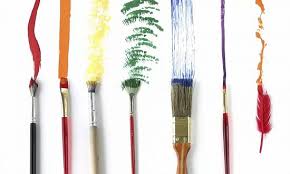nastya
RUSSIAN ACADEMY OF ART OF ST. PETERSBURG (part 1)
 In 2007, the Russian Academy of Arts celebrates its 250th anniversary. November 17, 1757 (old style – November 6) – The governing Senate of the Russian Empire adopted a decree on the establishment of the “Academy of the Three Noble Arts.” In fact, such an institution in Russia was conceived much earlier, and by that time it had been successfully operating for at least thirty years. The idea of establishing a community of artists was expressed by Peter the Great and his close associates in the 1690s. After visiting the first emperor of Paris and the French academies in 1719, this idea took on a concrete form, but for many cases Peter the Great signed the necessary decree only shortly before his death, December 22, 1724. He proclaimed the creation of a single “Academy of Sciences and Arts” – a fact that is very important today, since the Russian Academy of Arts cherishes the fact that it was born simultaneously with the Russian Academy of Sciences and has been cooperating with it for almost three centuries. Continue reading
In 2007, the Russian Academy of Arts celebrates its 250th anniversary. November 17, 1757 (old style – November 6) – The governing Senate of the Russian Empire adopted a decree on the establishment of the “Academy of the Three Noble Arts.” In fact, such an institution in Russia was conceived much earlier, and by that time it had been successfully operating for at least thirty years. The idea of establishing a community of artists was expressed by Peter the Great and his close associates in the 1690s. After visiting the first emperor of Paris and the French academies in 1719, this idea took on a concrete form, but for many cases Peter the Great signed the necessary decree only shortly before his death, December 22, 1724. He proclaimed the creation of a single “Academy of Sciences and Arts” – a fact that is very important today, since the Russian Academy of Arts cherishes the fact that it was born simultaneously with the Russian Academy of Sciences and has been cooperating with it for almost three centuries. Continue reading
ART UNIONS AND CREATIVE UNIONS OF RUSSIA ON THE TURN OF THE XIX-XX CENTURIES (part 3)
 “Bauhaus” (German: Bauhaus – building house) – art educational institution and creative association in Germany. It was founded in 1919 by the architect V. Groppius in Weimar, in 1925 it was transferred to Dessau, in 1933 it was abolished by the fascist authorities. The leaders of the Bauhaus (H. Mayer, J. Albers and others), relying on the aesthetics of functionalism, set out to develop new principles of shaping in plastic arts; they strove for a comprehensive artistic solution to the domestic environment, developed the ability of students to creatively comprehend new materials and designs, and taught them how to create solid and practical products. A significant place was given to design teaching. The main link of the educational process at the Bauhaus was the students’ labor practice in production, art and design workshops, where, along with studies and studies, they created architectural projects, decorative plastic works, and samples of mass household products. Continue reading
“Bauhaus” (German: Bauhaus – building house) – art educational institution and creative association in Germany. It was founded in 1919 by the architect V. Groppius in Weimar, in 1925 it was transferred to Dessau, in 1933 it was abolished by the fascist authorities. The leaders of the Bauhaus (H. Mayer, J. Albers and others), relying on the aesthetics of functionalism, set out to develop new principles of shaping in plastic arts; they strove for a comprehensive artistic solution to the domestic environment, developed the ability of students to creatively comprehend new materials and designs, and taught them how to create solid and practical products. A significant place was given to design teaching. The main link of the educational process at the Bauhaus was the students’ labor practice in production, art and design workshops, where, along with studies and studies, they created architectural projects, decorative plastic works, and samples of mass household products. Continue reading
ART UNIONS AND CREATIVE UNIONS OF RUSSIA ON THE TURN OF THE XIX-XX CENTURIES (part 2)
 The Association of New Architects (ASNOVA) is the first organization of innovative architects in post-revolutionary Russia, founded in 1923 in Moscow. The aim of the Association was to develop a new formal-artistic language of architecture, new methods of architectural education. The Association was closely connected with the Faculty of Architecture of Vhutemas, its members (N.V. Dokuchaev, V.F. Krinsky and others) organized a special department there, where teaching was conducted according to the new methodology. In addition, members of ASNOVA appeared in the press on various issues of architecture, and also prepared the publication “Architecture of Vhutemas” (M., 1927). Continue reading
The Association of New Architects (ASNOVA) is the first organization of innovative architects in post-revolutionary Russia, founded in 1923 in Moscow. The aim of the Association was to develop a new formal-artistic language of architecture, new methods of architectural education. The Association was closely connected with the Faculty of Architecture of Vhutemas, its members (N.V. Dokuchaev, V.F. Krinsky and others) organized a special department there, where teaching was conducted according to the new methodology. In addition, members of ASNOVA appeared in the press on various issues of architecture, and also prepared the publication “Architecture of Vhutemas” (M., 1927). Continue reading



